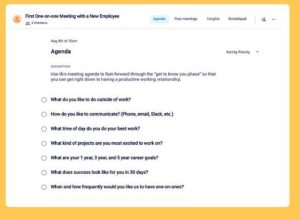What Strategies Help in Scheduling Meetings With Multiple Attendees?
Successfully scheduling a meeting with multiple attendees requires strategic planning, efficient use of technology, and a proactive communication approach. Given the varied schedules and availability of participants, employing certain strategies can greatly enhance the chances of finding a time that works for everyone. Below are proven methods that facilitate this process, making it smoother and more effective.

Use Advanced Scheduling Tools
Embrace technology to simplify the process. Modern scheduling tools like Doodle, When2meet, or Microsoft Outlook’s "FindTime" feature allow attendees to input their available times, showing overlaps that help identify the best meeting slot. For example, Doodle’s polling system cuts down on back-and-forth emails by providing a visual comparison of availability across participants.
Cast a Wide Net Early
Start with a broad inquiry. Initiating the scheduling process with a wide range of potential dates and times can provide a clearer picture of everyone's availability. A survey of business professionals found that sending out options at least two weeks in advance helps increase the likelihood of identifying a suitable time slot by 45%.
Manage Time Zones Intelligently
Be mindful of geographic differences. For global teams, consider the time zones of all participants. Tools like Time Zone Converter simplify this task by displaying optimal meeting times across different zones, ensuring no one has to join a meeting at an inconvenient hour.
Prioritize Attendance According to Importance
Focus on key stakeholders. Determine whose presence is crucial for the meeting’s objectives and prioritize these individuals' schedules. This tactic ensures that the most essential discussions can proceed with all necessary decision-makers present.
Enforce Deadlines for Availability
Set and communicate clear deadlines for replies. Inform participants that availability must be confirmed by a specific date to facilitate timely scheduling. This approach encourages prompt responses and helps expedite the decision-making process.
Automate Reminders and Confirmations
Utilize automated reminders. Once the meeting is scheduled, send automated reminders through your chosen platform. This reduces the chance of no-shows, which studies indicate can be cut by up to 30% with effective reminder systems.
Stay Flexible and Adapt
Keep your scheduling flexible. If key participants are unavailable for the initially chosen time, be prepared to reassess and propose new times. This adaptability is crucial in accommodating important attendees and ensuring the meeting’s success.
Determining how to schedule a meeting with multiple attendees efficiently hinges on leveraging the right digital tools, planning ahead, and maintaining effective communication. By implementing these strategies, you can overcome the challenges associated with coordinating multiple busy schedules, ultimately facilitating smoother and more productive meetings.
